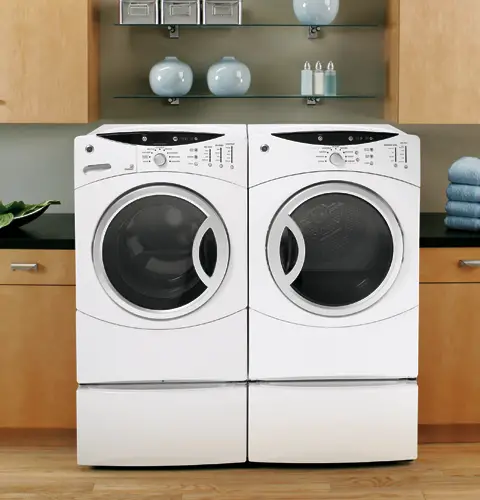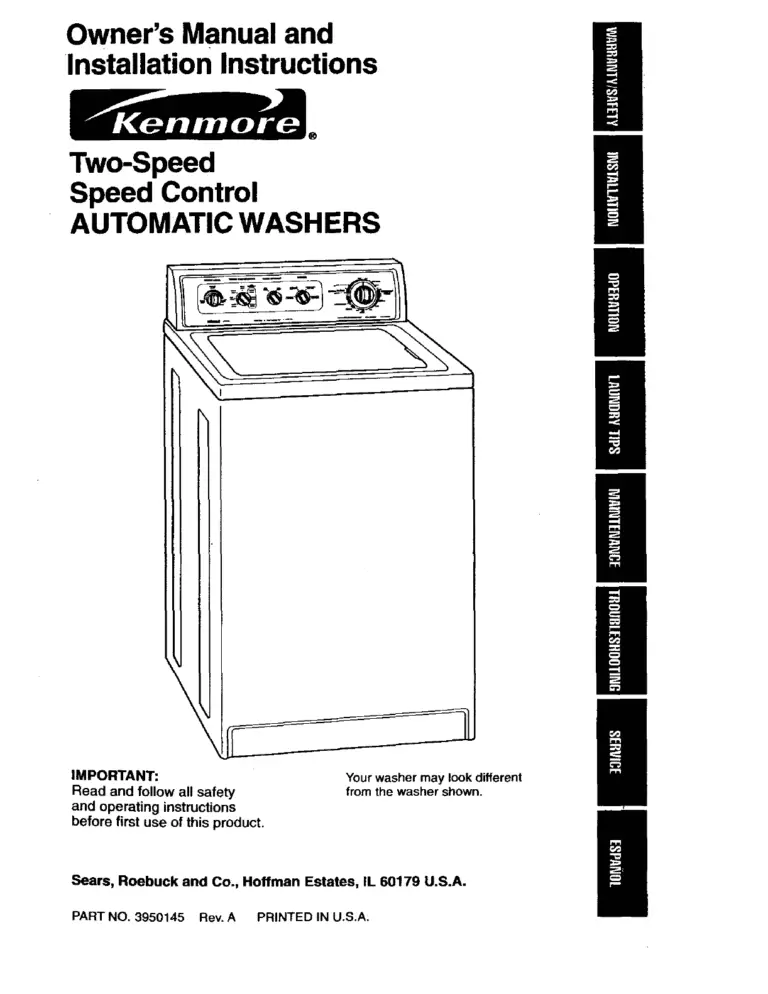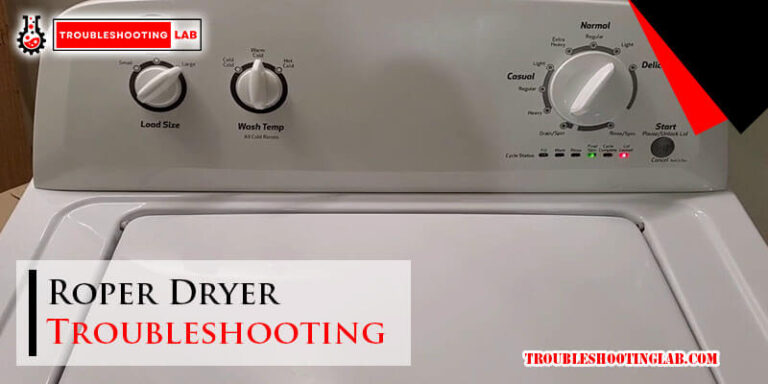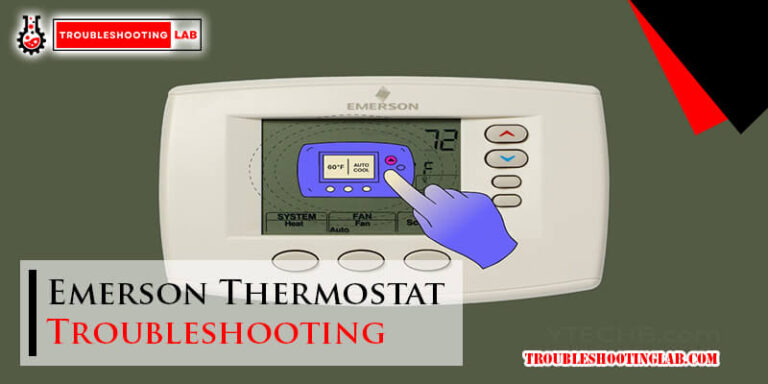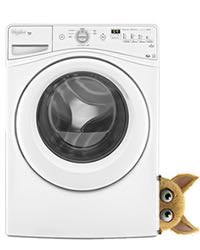Washer Drain Overflows Troubleshooting: Quick Fixes Guide
Imagine you’re doing laundry, expecting clean clothes and a fresh start, but instead, you’re met with a flooded mess. Washer drain overflows can quickly turn a simple chore into a stressful situation.
You might feel frustrated, confused, or even a bit helpless, but don’t worry—you’re not alone, and there’s a solution. Understanding how to troubleshoot these issues can save you time, money, and a lot of headaches. In this guide, you’ll discover simple steps to identify the cause of your washer drain overflow and practical solutions to fix it.
Whether it’s a blockage, a faulty pump, or a plumbing issue, knowing what to look for and how to address it empowers you to take control. By the end of this article, you’ll not only have a clear path forward but also the confidence to tackle any laundry room disaster with ease. Ready to get your laundry back on track? Let’s dive in!
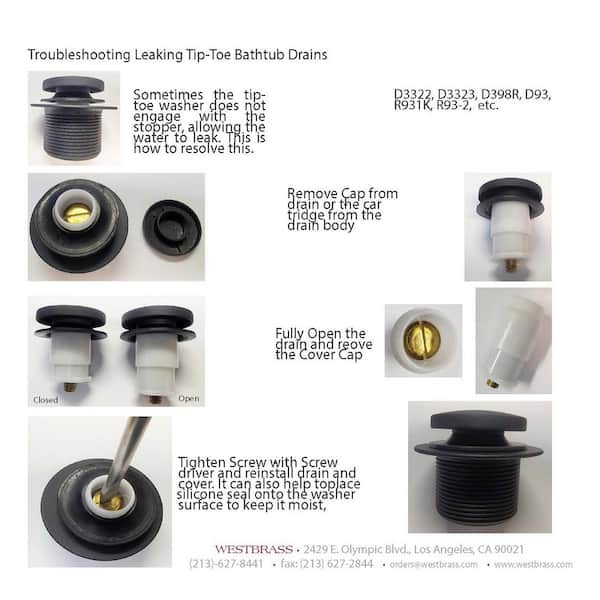
Credit: www.homedepot.com
Common Causes Of Washer Drain Overflows
Washer drain overflows can cause stress and mess. Understanding why they happen can save time and money. Several factors contribute to these overflows. Knowing common causes helps prevent future issues.
Clogged Drain Pipes
Drain pipes can clog easily. Lint, hair, and dirt accumulate over time. These block water flow, causing overflows. Regular cleaning keeps pipes clear. Routine checks can identify early signs of blockage.
Blocked Vent Pipe
Vent pipes balance pressure in drainage systems. Blockages disrupt this balance. This can lead to overflow issues. Dirt or debris often cause these blockages. Checking vent pipes ensures smooth water flow.
Improper Washer Installation
Installation errors can cause drain overflows. Incorrect hose placement is common. Hoses should fit tightly and securely. Loose connections lead to leaks and overflow. Professional installation avoids these problems.
Identifying Signs Of Drain Overflow
Experiencing a washer drain overflow can be frustrating, but identifying the signs early can save you from a watery disaster. Have you ever noticed strange noises or water backing up? These are clear indicators that something is amiss. Recognizing these signals is essential for preventing damage to your home and maintaining the efficiency of your washer.
Water Backing Up
One of the most obvious signs of a drain overflow is water backing up. You might notice water pooling around your washer or even leaking onto the floor. This can be a sign that your drain isn’t handling the water effectively. If you see this, act quickly to prevent further damage. Check the drain hose for clogs or kinks that could be restricting water flow.
Unusual Sounds
Strange noises coming from your washer can be another clue. Have you ever heard gurgling or bubbling sounds during a wash cycle? These noises often mean there’s air trapped in the drain line or a blockage. It’s like your washer is trying to communicate that it needs attention. Listening to your washer’s cries for help can help you tackle the problem before it escalates.
Slow Drainage
Is your washer taking longer than usual to drain? Slow drainage is a sign that something is not right. You may find that the water sits in the drum longer than it should, causing delays in your laundry routine. This can be due to partially blocked pipes. Clearing these obstructions can restore your washer’s efficiency and save you time.
Have you ever faced one of these issues? Taking action quickly can prevent bigger problems down the line. What steps can you take today to ensure your washer is operating smoothly?
Quick Fixes For Minor Blockages
Encountering washer drain overflows can be frustrating. Clear minor blockages using a plunger or unclogging solution. Regular cleaning prevents future issues, ensuring smooth operation.
Quick fixes can often solve washer drain overflows from minor blockages. By addressing these issues quickly, you can save time and prevent larger problems. Let’s explore some easy solutions to keep your washer running smoothly.Clearing Drain Hoses
Check the drain hose for kinks or blockages. Disconnect it carefully from the washer. Use a flashlight to look inside. Remove any visible debris using a wire hanger. Be gentle to avoid damaging the hose. Reconnect the hose securely to ensure proper drainage.Using Drain Cleaners
Choose a safe, biodegradable drain cleaner. Follow the instructions on the label closely. Pour the cleaner into the drain. Allow it to sit for the recommended time. This helps dissolve minor clogs and debris. Rinse with water to clear any remaining residue.Hot Water Flushing
Boil a pot of water. Slowly pour the hot water into the drain. This can help dissolve grease and soap buildup. Repeat the process if necessary. Hot water flushing is a natural way to clear minor blockages. It keeps your drain clean and free-flowing.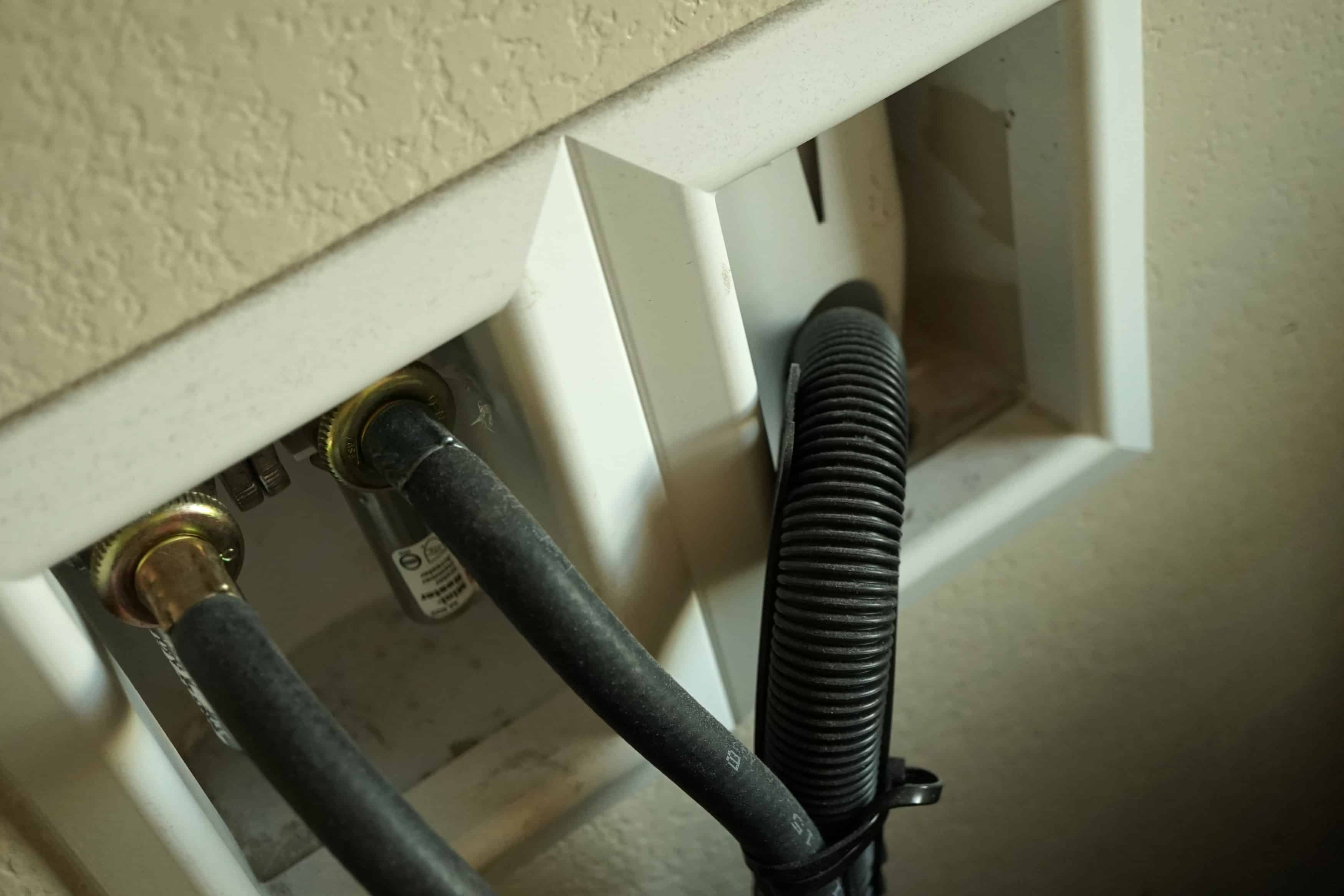
Credit: choateshvac.com
Addressing Installation Issues
Addressing installation issues is crucial when troubleshooting washer drain overflows. Many problems stem from improper setup, which can lead to frustrating and messy situations. By focusing on key installation aspects, you can prevent potential overflow disasters and ensure your washer runs smoothly.
Checking Hose Connections
First, examine the hose connections behind your washer. Ensure that the drain hose is securely attached and free from kinks or blockages. A loose or twisted hose can disrupt water flow, causing overflows. If you notice any damage, replace the hose immediately. Have you ever found water pooling around your washer? A quick fix might be just a hose adjustment away.
Ensuring Proper Height
The height of the drain hose is another critical factor. The hose should ideally be between 30 to 96 inches from the floor to allow proper drainage. A hose that is too low can siphon water back into the washer, while one that is too high might struggle to drain effectively. Use a tape measure to check your hose height and adjust it as needed. A small height change can make a big difference in preventing overflows.
Adjusting Washer Levels
Finally, make sure your washer is level. An unbalanced washer can cause water to slosh around, potentially leading to spills. Place a level on top of the washer to check for evenness. If adjustments are needed, you can use the adjustable feet at the bottom of the washer. Have you ever noticed your washer shaking during a spin cycle? It might just need a little leveling to keep everything steady.
Taking the time to properly address these installation issues can save you from the headache of a washer drain overflow. Are you ready to roll up your sleeves and get your washer back in perfect working order?
When To Call A Professional
Experiencing repeated washer drain overflows? It might be time to call a professional. They can quickly identify hidden clogs or faulty parts, preventing further damage.
When dealing with a washer drain overflow, you might find yourself in a sticky situation. It can be tempting to try every DIY solution under the sun. However, there are instances when calling a professional is not only a wise choice but a necessary one. Let’s dive into those scenarios where expert intervention is your best bet.Persistent Overflow Problems
If your washer drain continues to overflow despite your best efforts, it’s time to bring in a professional. You may have tried unclogging the drain or adjusting the hose, but the problem persists. This could indicate a deeper issue that requires a trained eye. Sometimes, the complexity of the problem lies beyond what you can see. A professional can identify hidden issues and provide a lasting solution. Don’t let a stubborn overflow cause more damage by delaying the call.Complex Plumbing Issues
Some plumbing systems are intricate, especially in older homes. If your plumbing setup is complex, a professional’s expertise is invaluable. They can navigate the maze of pipes and connections with precision. Attempting to fix complex plumbing issues on your own might lead to more significant problems. Imagine trying to untangle a knot without fully understanding how it formed. Save yourself the headache and potential damage by calling in an expert.Suspected Pipe Damage
If you suspect there’s damage to your pipes, it’s crucial to get professional help immediately. Pipe damage can cause significant water damage if not addressed swiftly. Have you noticed any unusual noises or water discoloration? A professional plumber has the tools and knowledge to assess the situation accurately. They can determine if a simple repair is needed or if a complete pipe replacement is necessary. Protect your home from further damage by acting promptly. In what scenarios have you found calling a professional to be your best decision? Share your experiences and help others learn when to seek expert assistance.Preventive Measures For Future Overflows
Washer drain overflows can turn laundry day into a nightmare. The good news is, you can prevent future overflows with a few simple steps. By investing a little time in regular maintenance and smart choices, you can save yourself from the hassle and mess of unexpected floods. Let’s dive into some practical preventive measures that will keep your laundry room dry and stress-free.
Regular Maintenance Tips
Think of regular maintenance as your washer’s health check-up. Start by inspecting the hoses for any signs of wear or leaks. A small crack can lead to significant problems if not addressed promptly.
Keep your washer level. An unbalanced machine can cause vibrations that might loosen connections over time. Use a level tool to check and adjust the feet if necessary.
Test the drain regularly. Pour a gallon of water down the drain and observe how quickly it flows. Slow drainage can be an early sign of blockage.
Installing A Drain Filter
Installing a drain filter is a smart move to catch debris before it clogs your system. Hair, lint, and other particles can accumulate and block your drain.
Choose a filter that fits your drain size. Many filters are designed to be easy to install and clean. Simply remove the filter, rinse it under water, and place it back.
This small addition can save you from big headaches. Have you ever wondered why some homes never face drainage issues? A drain filter might just be their secret weapon.
Monitoring Water Usage
Keep an eye on how much water your washer uses. Excessive water levels can overwhelm the drainage system, leading to overflows. Consult your washer’s manual for recommended settings.
Consider investing in a water-efficient washer. These models use less water per cycle, reducing the chance of overloading the drain. Plus, they are better for the environment.
Be mindful of your wash load size. Overloading the washer not only strains the machine but also increases water usage. Are you guilty of cramming too many clothes in one go? It might be time to reconsider.
By embracing these preventive measures, you’re not just protecting your home but also enhancing your laundry routine. A little effort today can lead to a worry-free wash tomorrow.
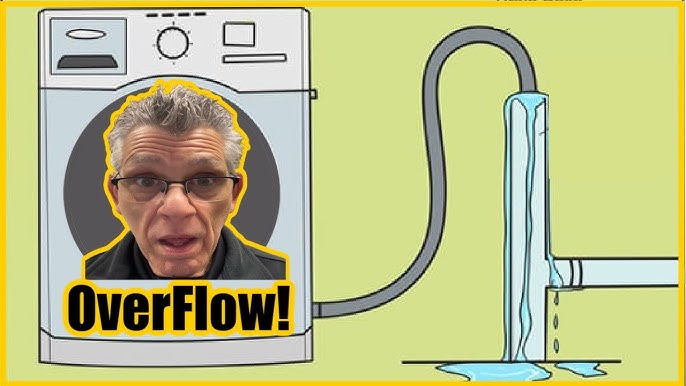
Credit: www.youtube.com
Conclusion
Troubleshooting a washer drain overflow is essential for smooth laundry days. Always check for clogs in the drain hose and pipes. Clean the lint filter regularly to prevent blockages. Verify the height of the drain hose. It should not be too low.
Inspect the washer’s pump for any debris. Ensure proper water flow from the home plumbing. Routine maintenance can prevent major issues. Address problems promptly to avoid damage. With these steps, your washer will function efficiently. Enjoy hassle-free laundry experiences by staying proactive and attentive.
Keep your washer in top shape with these simple tips.

